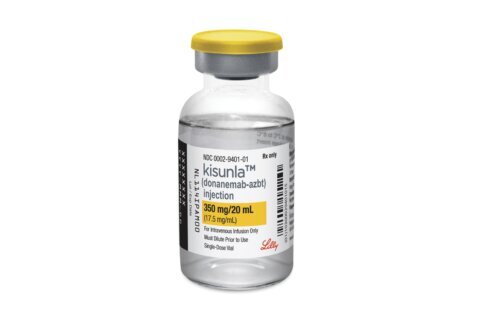The Federal Reserve’s favorite inflation gauge, the core personal consumption expenditures index, or PCE, which leaves out volatile food and energy prices, rose 2.6% in May on an annual basis, the slowest pace since March 2021. Economists expected as much. As the discussion over “higher for longer” interest rates continues in light of slowing core PCE, it’s looking more likely that the Fed will begin cutting the benchmark interest rate as early as September. That’s especially true considering that consumer spending came in weaker than projections for May, despite a 0.5% increase in personal income that was faster than anticipated.
If you listen to the banter of Fed officials, however, not all of them are on the same page as far as the timing of interest rate cuts. Fed Chair Jerome Powell has made it clear that the central bank will do what’s necessary to ensure inflation is moving toward its 2% target.
According to the CME FedWatch tool, bond traders are pricing in a nearly 66% probability of at least a 25-basis-point rate cut at the Fed’s September policy meeting, a percentage that has remained nearly unchanged for the past week, even with the announcement of the PCE reading on June 28. Fed funds futures pricing data suggest a nearly 77% chance of a rate cut at the November Fed meeting.
[Sign up for stock news with our Invested newsletter.]
Like many investors, you may be wondering what tweaks to make to your investment portfolio ahead of potential interest rate cuts by the Fed. Should you try to lock in certain types of high yield before rates come down? Are there certain stock, bond or other investments you should be looking at now? The financial advisors who write for Advisor’s Corner, U.S. News’ series of columns from licensed financial professionals, weigh in on some of the top questions from around the internet related to Fed interest rate cuts and how investor portfolios could be affected:
Reader question: How do I decide where to invest during rate cuts?
KATE STALTER: If you’re deciding where to invest, always begin by understanding your own situation, including time horizon, goals and risk tolerance. That’s taking a longer-term view, and is ultimately a better way to think about your investments than whether or not rates may decline. For example, if you’re nearing retirement, you may be relying more on income-producing investments, such as bonds. Prices of previously issued bonds rise when rates decrease. As coupon rates remain steady, that means yields go down.
However, retirees should be sure to have some growth assets in their portfolios, which tend to perform well in decreasing-rate environments. In addition, growth stocks are a proven way to outpace inflation. Gone are the days when retirees could only focus on the income portion of their portfolios.
JULIE PINKERTON: And with all investments, attempting to time the market, in this case guessing when the Fed will cut rates, is ill-advised. Rather, it is imperative that investors look at their entire portfolio and add in high-yield opportunities as appropriate to maintain both their risk profile and investment goals. You will want to look to not only address yield, but also diversification should the Fed move adversely. You also want to consider whether you are seeking additional growth or prefer to maximize income.
What are the best high-yield investments?
MARGUERITA (RITA) CHENG: It is important to have both short-term savings and long-term investments. In preparation for rates, you can consider repositioning some of the funds you have in high-yield savings accounts in certificates of deposit. You can consider purchasing CDs of varying maturities to lock in higher rates. By staggering the maturities of your CDs, you can maintain liquidity and protection against interest rate risk.
JULIE: An easy way to capture high yield ahead of rate cuts is through certificates of deposit. CDs offer a set guaranteed crediting rate for a stated duration of time. At the end of the time period, called the maturity date, you can renew the CD at then-prevailing rates or end the investment. Because there are fewer moving parts, most clients find it simple to compare options. Typically, the longer the duration, the higher the credited interest rate.
However, these funds are not liquid until the maturity date. If liquidity is a prime concern, it may be prudent to purchase multiple CDs and utilize a strategy called “laddering,” where each CD has a different length of time to maturity, as Rita said. CDs are insured up to $250,000 through either the Federal Deposit Insurance Corp. (banks) or NCUA (credit unions). Given that the highest-yielding CDs may be from riskier financial institutions, this can relieve any illiquidity anxiety.
KATE: If you’re rebalancing and want to capture yield ahead of interest-rate cuts, high-yield bonds or dividend-paying stocks may be appropriate investments. These assets frequently offer better returns when interest rates decline. Also, real estate investment trusts (REITs), preferred stocks and oil-and-gas master limited partnerships typically generate higher yields than common stocks or bonds.
JULIE: Other options follow a range of risk, from money market funds to more elaborate opportunities with a variety of defined-maturity exchange-traded funds, or ETFs, and preferred stocks. Fixed-income bonds are especially enjoying a renaissance in this investing climate.
SCOTT WARD: High-yield fixed-income investments have provided investors with an average yield of about 7.8% for most of 2024, according to data from Bloomberg. That’s been a fantastic outcome this year for investors who have wanted competitive income and some cushion in short periods of market volatility. Still, high-yield investments (in the form of junk bonds) often have short maturities, which may subject this sector to refinancing risk if the Fed holds rates high for a while longer.
[READ: Robo Advisor vs. Online Financial Advisor: What’s the Difference?]
Are rate cuts bullish? Why?
JULIE: Conventional wisdom still holds that cutting rates is bullish, while actions that would delay cuts are considered bearish. Rate cuts favorably impact consumer confidence. This is because rate cuts signal that inflation is coming under control, freeing up households to begin spending more on both consumable goods as well as big-ticket purchases, such as new cars, homes and major renovation projects. With lower interest rates, more people are able to qualify for a mortgage or other consumer loans. Businesses feel confident to open lines of credit and invest in their growth.
However, there are other factors in play that can cause stocks to rise even if the Fed holds the line on rate cuts. For example, if the economy remains resilient in the face of the current interest rates, stocks will continue to respond favorably.
Why would the Fed cut rates?
JULIE: The Fed was tasked with managing U.S. monetary policy and keeping the economy healthy for consumer spending and credit as well as employment. The Federal Open Market Committee, or FOMC, meets eight times annually to determine if interest rates should be hiked or cut. When consumers struggle to find jobs or inflation dampens household spending, the Fed will cut rates in order to boost individual confidence to buy more goods and services, as well as to incentivize businesses to expand their operations. This lever can only work when interest rates are at or above zero, although several other countries have experimented with negative rates.
RITA: When the Fed cuts interest rates, it is reducing the rate that banks charge one another when lending money to satisfy the federal reserve requirements. The Fed would decide to cut rates, which can lower borrowing costs for consumers and businesses, with the idea that the reduced cost of capital may give both more confidence to spend and invest. The Fed will decide to cut rates when it believes that inflation has reached its desired 2% target.
SCOTT: Right, lowering borrowing costs for consumers and businesses can spur economic growth. So, generally, rate cuts often occur in periods when inflation starts to cool and economic activity begins to wane. As of June 28, CME’s FedWatch tool estimated a nearly 66% chance of a rate cut in September, and a 94% chance of a rate cut in December.
KATE: When inflation is running high, the Fed may raise rates to slow the economy. However, high rates result in real economic challenges, such as the inability for many Americans to buy a home. In an election year, there’s even more attention than usual on how a Fed decision to lower rates may impact Americans. While the markets had earlier anticipated three rate cuts in 2024, that number has dropped to one, as inflation remains stubborn while economic growth has also remained strong.
Who benefits from high interest rates?
SCOTT: Individual savers, investors who purchase bonds and lending companies often benefit from periods of high interest rates.
JULIE: Inflation erodes the purchasing power of a dollar. While many people feel the negative effects at the gas pump, the grocery store and in their monthly rent, there are some groups of people that benefit from higher interest rates. I’ll list them for you here:
— Fixed-interest-rate borrowers. The 30-year mortgage is often referred to as an inflation hedge because a homeowner is repaying the debt with cheaper dollars. Additionally, a homeowner often sees the value of their home increase.
— Food producers. While restaurant owners feel the pain of increasing supply costs, higher wage demands from workers and fewer customers, the agricultural supply chain can command higher prices and easily pass them along to their clients because everybody still needs groceries to eat, even at home.
— Collectors. Fine art, premium wines, classic cars and hard assets are not directly correlated to traditional investments. As a result, these investors find that their collections retain their value during inflation.
— Landowners and real estate investors. Physical assets like land are especially resilient because demand remains high, often pushing prices even higher. If these owners carry fixed-rate debt on their properties, they also benefit from repaying their loans with discounted dollars. Income-producing properties benefit from their ability to raise rent.
— Energy and EV manufacturers. Energy demand rarely drops in inflationary periods even as gas prices rise. While they may seem like strange bedfellows, EV demand rises when gas prices are high.
— Banks, mortgage companies and credit card issuers. Any financial institution that loans money will charge an interest rate on the debt, most especially credit cards, variable-rate mortgages and adjustable personal loans. The key is that this group is collecting interest, and inflation increases the amount due to them. Additionally, when consumers are unable to easily afford necessities from their wages, they often turn to their credit cards to fill the gap. They also will take a long time to repay the loan, providing greater profit to the lender.
— Health care ecosystems. Individuals tend to have increased medical expenses during inflationary periods, often an outgrowth of their financial stress from higher prices, increased housing costs and rising debt. Consumers cannot easily compare costs and find cheaper alternatives, so health care systems are easily able to raise prices and increase top-line revenue. However, health care shortages are putting pressure on workers’ wages, tempering profits.
What stocks should I buy when interest rates fall?
RITA: Certain sectors can benefit from lower interest rates. For example, consumer discretionary. Lower interest rates reduce the cost of borrowing, which can encourage consumers to feel more comfortable increasing their discretionary spending.
Information technology is capital-intensive. Lower borrowing costs allow for ongoing investments in research and development, as well as strategic and synergistic mergers and acquisitions.
Utilities include businesses that provide electricity, water, gas and renewable energy. Utility companies often pay dividends. When the Fed starts to cut interest rates, bonds become less desirable because of the inverse relationship between interest rates and bonds. Because lower interest rates make bonds less appealing, income investors will shift to utility stocks for the dividend income.
Remember, you can access these sectors through a mutual fund or ETF.
SCOTT: In periods when interest rates decline and corporate earnings improve, cyclical equity sectors like consumer discretionary, technology, real estate and financial sectors have historically done well.
KATE: Growth sectors such as technology, communications services and consumer discretionary often outperform in a falling-rate environment. That’s because lower rates reduce borrowing costs, which impacts capital-intensive industries and those on a fast growth trajectory. Additionally, lower rates increase the present value of future earnings. In plain English, growth stocks become more attractive to investors who anticipate lower interest payments resulting in higher earnings.
JULIE: Investors can take several paths as new opportunities arise from a change in interest rates:
— Staying defensive with utilities and consumer staples stocks, such as Walmart Inc. (ticker: WMT), Costco Wholesale Corp. (COST) and Estee Lauder Cos. Inc. (EL).
— Adding blue-chip dividend-paying stocks in sectors that have positive growth such as energy and health care. Many of the top consumer staples stocks have extremely long track records of consistent dividend payments.
— Seeking stocks that would benefit from a surge in consumer spending from pent-up big-ticket item demand, such as residential homebuilders, automotive retailers, furniture stores and building suppliers.
Investment-grade preferred stocks have the same inverse relationship with interest rates as bonds, so as interest falls, their value rises. In exchange for losing voting rights, preferred stockholders receive an enhanced dividend income and preferential treatment in the event the company goes belly-up.
How do I make more money ahead of rate cuts?
SCOTT: Bond investors have a variety of reasons to be optimistic ahead of the Fed’s rate cuts. For starters, bond investors, especially those who purchased bonds as the Fed hiked rates, have access to attractive yields for the first time in more than a decade. Also, since 1990, within 12 months following the last four periods of Fed rate hikes, core U.S. aggregate bonds and municipal bonds have snapped back by 10.5% and 7.2%, respectively, according to data from Morningstar and Hartford Funds.
KATE: Investors might consider a few strategies to make more money before the Federal Reserve cuts interest rates. Those include:
— Growth stocks. As mentioned before, lower rates typically benefit growth stocks by reducing borrowing costs and increasing the present value of future earnings. That’s why you’ll often see growth stocks, such as techs, rally when rate cuts may be on the table.
— High-yield bonds. These bonds often perform well when rates decline, as investors turn to securities that can deliver a higher return.
— Real estate investment trusts (REITs). REITs pay a higher yield than other forms of equity. Being invested in brick-and-mortar real estate, REITs naturally benefit from lower borrowing costs. This makes them appealing in a low-rate environment. By law, REITs must pay out at least 90% of net earnings to shareholders in the form of dividends.
— Preferred stocks. Preferreds are equity securities that share characteristics with bonds, such as a fixed dividend. When interest rates fall, preferred shares generally offer better yields than common stocks and bonds.
— Dividend-paying stocks. Companies with reliable dividends and those with a long history of boosting their shareholder payouts become more attractive as rates rise and fixed-income yields drop. Investors can access a basket of dividend payers through ETFs such as the Vanguard Dividend Appreciation ETF (VIG).
More from U.S. News
Can AI Pick Stocks? A Look at AI Investing
7 Best Natural Gas Stocks and Funds to Buy
9 Best Small-Cap Stocks to Buy in 2024
How to Invest During Rate Cuts originally appeared on usnews.com







